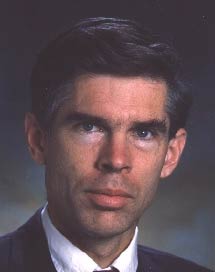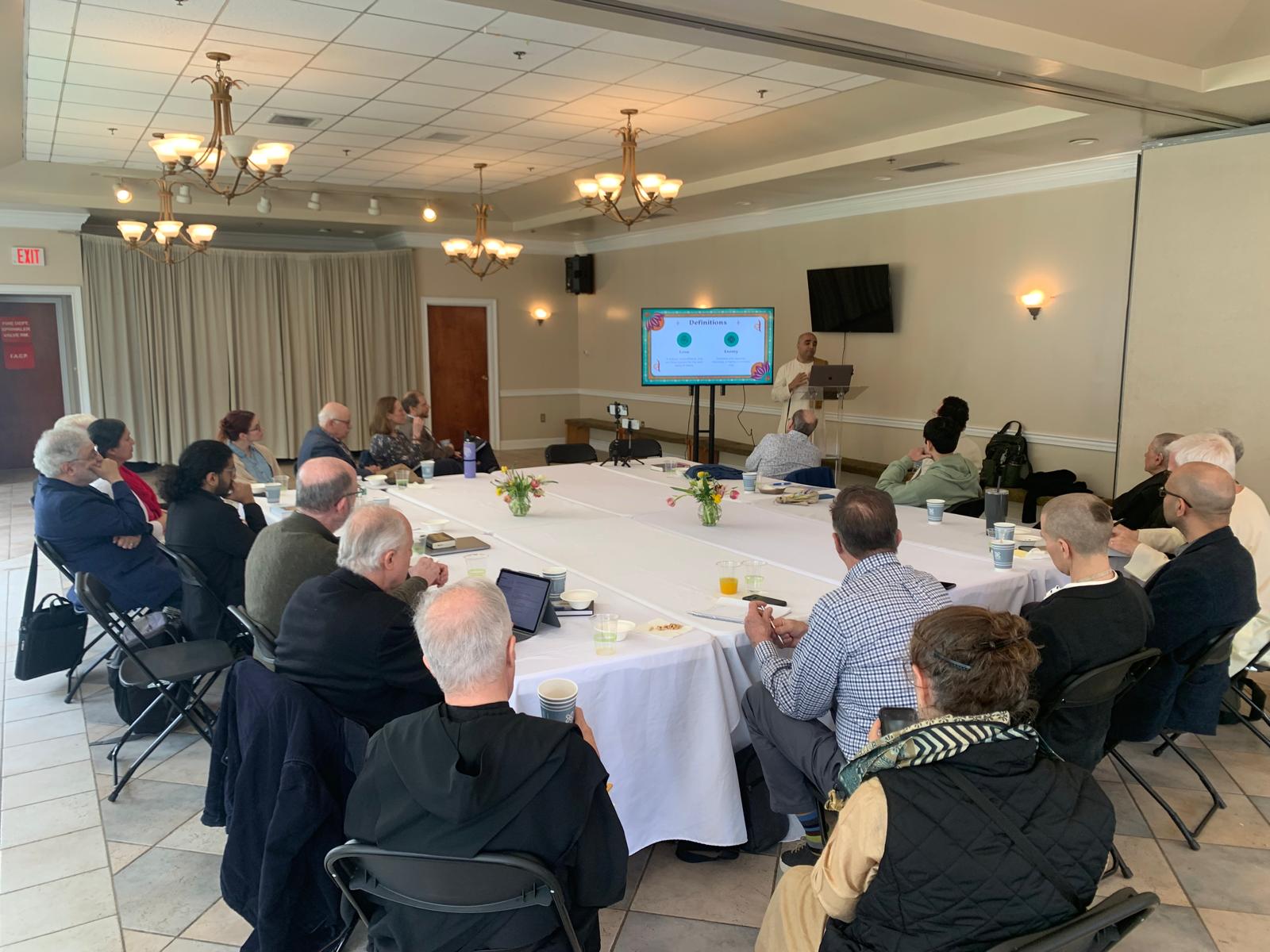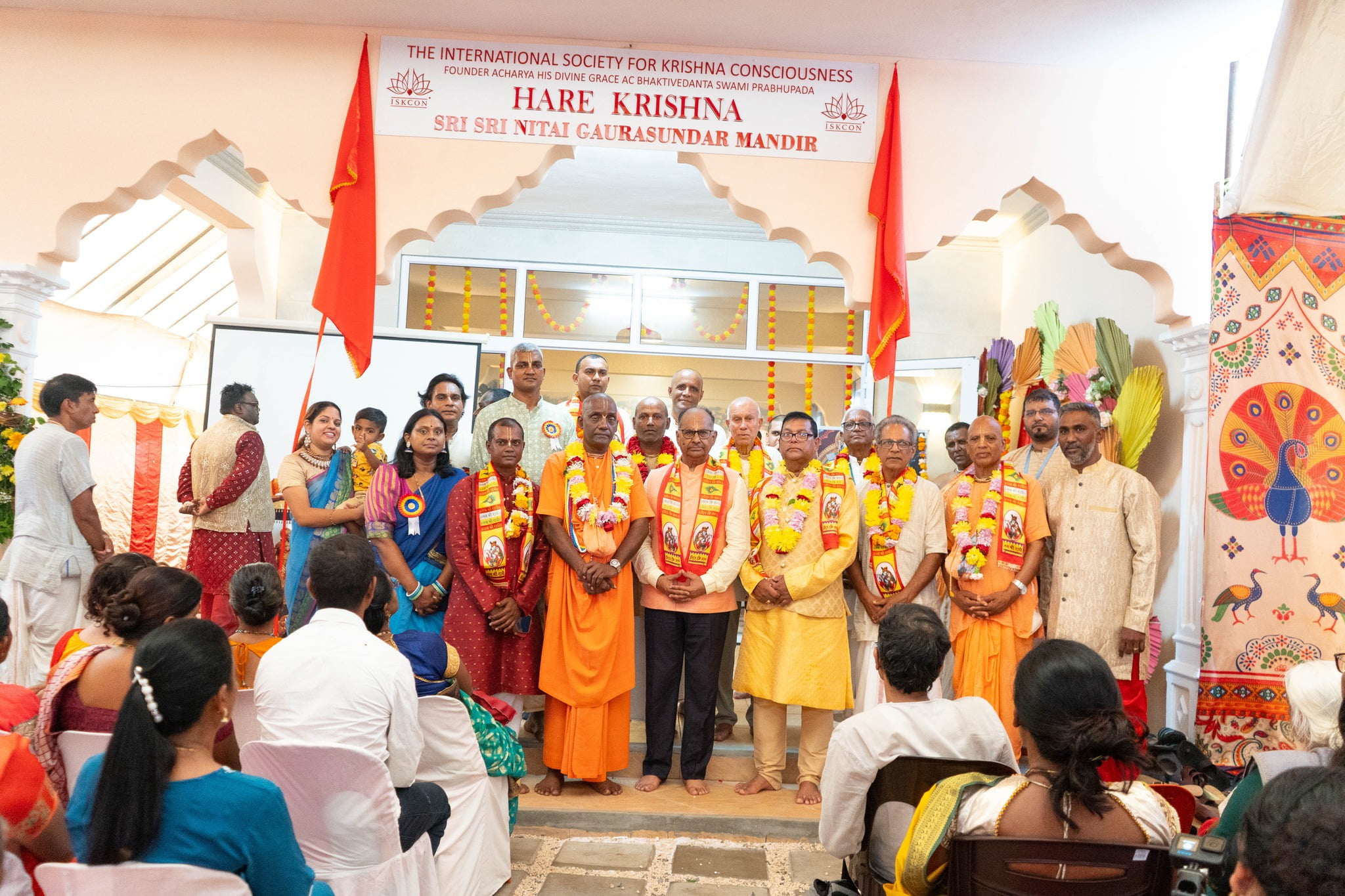Sadaputa’s Departure: A Quantum Loss
By Jayadvaita Swami | Sep 27, 2008

This article was sourced from Jayadvaita Swami’s personal website, used here with permission.
On Thursday, six days ago, I’d been thinking of a book to send to a cousin, Bill, a semi-retired pediatrician. In response to some points I’d made in talking about the spiritual nature of consciousness, he had asked me if I’d ever read anything by Stephen J. Gould, the Harvard paleontologist, evolutionary biologist, historian of science, and author of popular scientific articles and books.
The unstated message: I doubt whether your ideas about consciousness can stand up in the face of what we know from science.
I haven’t read more than a few brief essays by Gould, so I later wrote to ask that Bill recommend something. Meanwhile, I was thinking about what to recommend to Bill.
My thoughts at once went to Mechanistic and Nonmechanistic Science, a short book written by my godbrother Sadaputa Dasa, known in the world by his civil name, Dr. Richard L. Thompson.
The book was largely a critique of the prevailing worldview in science, that of mechanism and reductionism.
Would the book be suitable for Bill? Online, I began reading its first chapter. Yes, it would.
“The life sciences are now dominated by the idea that life can be completely understood within the framework of chemistry and physics,” Sadaputa wrote. “Those who subscribe to this viewpoint say that we can explain all features of life—from the metabolic functioning of cells up to the mental phenomena of thinking, feeling, and willing—as the consequences of underlying chemical processes. This viewpoint has become so pervasive that it is generally presented in biology courses as the only valid understanding of life. Thus in textbook after textbook we read that ‘life means chemical and physical organization,’ and that ‘all the phenomena of life are governed by, and can be explained in terms of, chemical and physical principles.’
“Yet despite the popularity of this view, we can point to at least one feature of life—the phenomena of conscious awareness—that is not amenable to molecular explanation.”
He went on to explain why.
The subject was technical, but the arguments, for the most part, were presented in language that someone who hadn’t specialized in science—someone like me—could understand.
Taking visual perception as an example of something of which we’re conscious, Sadaputa briefly described its mechanics, starting with the patterns of light that hit the retina, continuing with “impulses streaming down the optic nerve,” and following them down to the level of the cells in the brain, where those impulses “modify the overall pattern of chemical concentrations and electrical potentials maintained by the brain’s vast network of nerve cells.” Amidst all this, he asked, where precisely could we locate consciousness?
He argued that to find its true location we have to look beyond synapses and dendrites and neurotransmitters and see life as a nonmechanistic phenomenon.
I won’t go into his arguments here—I couldn’t do them justice—but as I read I was struck once again by Sadaputa’s brilliance, by his ability to strip an argument to its essentials, to see clearly where the lines of battle are drawn, and to offer scientific arguments directly, forcefully, and in a clear and plain fashion.
Coincidentally, that day I posted here a video someone had brought to my notice, in which the British humorist John Cleese subjects biological reductionism to a nice lampooning. It went well with what I’d been reading from Sadaputa.
The next day, on the phone, another godbrother told me that Sadaputa was gone. He’d been found at the bottom of his swimming pool, apparently the victim of a heart attack.
I think of myself as a philosophical person, fairly clinical about death, looking upon it as just another inevitable event, a transition from one lifetime to the next. But three days later when I spoke again with the godbrother who had called me, he described himself as “mopey” about the loss, and I recognized that I felt the same way.
My connection with Sadaputa goes back more than thirty years. I remember first meeting him one day at our Brooklyn Hare Krishna center, a large old brownstone in Brooklyn Heights. It was the middle of the day, and hardly anyone else was around, so I found myself spending at least an hour or so talking with this young scientist who had come there with questions about our philosophy.
We talked about consciousness, about Bhagavad-gita, about the implications of Schrödinger’s equation.
I don’t know whether that was the first time he had come, but he kept coming. And soon he dedicated himself to the pursuit of Krishna consciousness, and he applied his mind to crucial issues that arise when the Vedic philosophy and the modern scientific worldview intersect, or just straight-out collide.
Following that course of spiritually impelled scientific inquiry, he probed into theories of biogenesis, into artificial intelligence, into parapsychology, archeology, evolutionary biology, quantum physics, cosmology, and paradoxes of time, in all of them seeing latent spiritual questions.
When Srila Prabhupada, in the mid 1970s, founded the Bhaktivedanta Institute to explore scientific issues from a Krishna conscious point of view, of course Sadaputa was a charter member.
On another front, for the many years when I served as the editor or assistant editor of the magazine Back to Godhead, aimed at a general audience, Sadaputa would sometimes come to me with articles for the magazine, and when he didn’t I would pursue him for one. And over the years, I came to regard his articles as perhaps the most substantial contributions we published.
He could be temperamental. I remember we once argued over something—I suppose I objected he was getting too technical for our readers—and after that I had to tread gingerly with him for months before he’d write again.
But he also had a gift for making complex ideas simple to comprehend.
If an object is moving in a circle around you at an elevation of 800 million miles, he once wrote, and it’s 75 times farther away than that, to you it will seem like it’s very close to the plane on which you stand—that is, close to the ground.
Wait a second, I said. If it’s 800 million miles up, how can it look like it’s close to the ground? He responded with a simple picture: Imagine a ball riding in a circle one foot above a level field, and imagine that it’s seventy-five feet away. Now, when you look at the ball with your eye close to the ground, because of the long distance that ball will seem to nearly touch the ground too. “Got it?” he asked. “Works the same way when you scale the model up.” Now I got it.
Alongside expounding on Vedic science for the likes of readers like me in the pages of Back to Godhead, Sadaputa continued to write technical articles in mainline scientific journals, stuff like “A snapshot of canopy reflectance models and a universal model for the radiation regime” (written with Narendra S. Goel and published in Remote Sensing Review) and “Simulation of cellular compaction and internalization in mammalian embryo development as driven by minimization of surface energy” (written with Narendra S. Goel and Carlos F. Doggenweiler and published in the Bulletin of Mathematical Biology). I liked the snappy titles.
Sometime in the late 1980s, Sadaupta came up with a hunch, a hypothesis: The archeological record strongly upholds the picture of recent human evolution from lower species. But is that because evidence to the contrary has been filtered out to favor modern evolutionary views? If so, then if we were to look through the professional archeological literature pre-dating the general acceptance of Darwin’s theory of evolution, we should find such contrary evidence.
That hunch became a research project that yielded rich results, which Sadaputa presented with his co-author Drutakarma Dasa (Michael A. Cremo) in the 900-page Forbidden Archeology. The book is chock full of scientific evidence suggesting dates for Homo sapiens dramatically older than those endorsed by modern archeology, evidence apparently discarded because it stands so much at odds with currently accepted views. When the noted mainstream anthropologist Richard Leakey responded to Forbidden Archeology by writing “Your book is pure humbug and does not deserve to be taken seriously by anyone but a fool,” the authors were delighted. The book had hit its mark.
More recently, Sadaputa had immersed himself in studying the Vedic picture of the universe. The Vedic cosmology presents all sorts of features that seem entirely foreign to what we know from modern astronomical science. Is the Vedic picture just mythological, or is there a way in which we can understand it to offer a sensible picture of reality? Sadaputa’s thought and research resulted in another book, Vedic Cosmography and Astronomy, a major contribution to our understanding of the Vedic view.
Sadaupta was also contributing to the internal design of a proposed Vedic planetarium in Mayapur, India. And—dammit, I miss him. As his colleagues and their followers continue to work without him on the planetarium, and in the other fields of inquiry in which he pioneered, I am sure the insights and understandings he gave will be increasingly admired, and his loss still more deeply felt.
I append here a brief and rather old biography from the website of one of his publishers:
Sadaputa Dasa (Richard L. Thompson) was born in Binghamton, New York, in 1947. In 1974, he received his Ph.D. in mathematics from Cornell University, where he specialized in probability theory and statistical mechanics. He went on to do research in quantum physics and mathematical biology at the State University of New York at Binghamton, Cambridge University in the United Kingdom, and the La Jolla Institute in San Diego.
He is the author of seven books and the producer of six videos on science and philosophy, and he has written many articles for scientific journals and for Back To Godhead, the magazine of the International Society for Krishna Consciousness.
His most recent book, Maya: The World As Virtual Reality, introduces a theory that this world is actually a virtual reality, a theory which can accommodate empirical evidence for many phenomena that contemporary theories of consciousness cannot. His previous book, Mysteries of the Sacred Universe, discusses evidence of advanced astronomical knowledge in India’s ancient texts known as the Puranas.
He has designed exhibits using computer animation and multimedia techniques to present the Vedic cosmology and the Vedic world-view to the general populace, and he is presently writing a book discussing the laws of physics and the nature and origin of life.
Partial bibliography
Books
An Investigation into the Nature of Consciousness and Form (2006)
God and Science: Divine Causation and the Laws of Nature (2004)
Maya, the World as Virtual Reality (2003)
Mysteries of the Sacred Universe: The Cosmology of the Bhagavata Purana (2000)
The Hidden History of the Human Race (the condensed edition of Forbidden Archeology,) with Michael A. Cremo (1999)
Alien Identities: Ancient Insights into Modern UFO Phenomena (1993)
Vedic Cosmography and Astronomy (1989)
Forbidden Archeology, with Michael A. Cremo (1993)
Computer simulations of self-organization in biological systems, with Narendra S Goel (1988)
Mechanistic and Nonmechanistic Science 1981
Demonstration by information theory that life cannot arise from matter (Bhaktivedanta Institute monograph series) 1977
Consciousness and the laws of nature (Bhaktivedanta Institute monograph series) (1977)
Technical articles
“Modelling an arm’s spatially correlated biases: an application to camera calibration for teleoperation,” with R. W. Daniel and David W. Murray (Robotics and Autonomous Systems 2005)
“Operator matching during visually aided teleoperation,” with P. R. McAree, R. W. Daniel, and David W. Murray (Robotics and Autonomous Systems 2005)
“Providing synthetic views for teleoperation using visual pose tracking in multiple cameras,” with Ian D. Reid, L. A. Muñoz, and David W. Murray (IEEE Transactions on Systems, Man, and Cybernetics, 2001)
“A snapshot of canopy reflectance models and a universal model for the radiation regime,” with Narendra S. Goel (Remote Sensing Review, 2000)
“Real-time Visual Recovery of Pose using Line Tracking in Multiple Cameras,” with David W. Murray and Ian D. Reid, <(Proceedings of the British Machine Vision Conference, 1988)
“Simulation of cellular compaction and internalization in mammalian embryo development—II. Models for spherical embryos,” with Harold W. Lewis III and Narendra S. Goel (Bulletin of Mathematical Biology, 1988)
“Movable Finite Automata (MFA): A New Tool for Computer Modeling of Living Systems,” with Narendra S. Goel (Proceedings of the Interdisciplinary Workshop on the Synthesis and Simulation of Living Systems [ALIFE ’87], (Los Alamos, New Mexico, September 1987)
“Simulation of cellular compaction and internalization in mammalian embryo development as driven by minimization of surface energy,” with Narendra S. Goel and Carlos F. Doggenweiler (Bulletin of Mathematical Biology, 1986)
“Optimal solar/viewing geometry for an accurate estimation of leaf area index and leaf angle,” with Narendra S Goel (International Journal of Remote Sensing, 1985)
“Equilibrium states on thin energy shells” (Memoirs of the American Mathematical Society, 1974)












